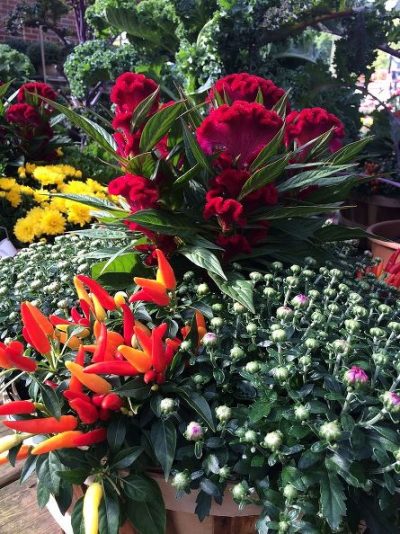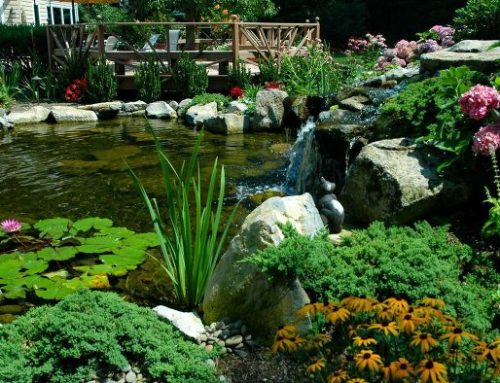Updated 10-12-23
Many of us in the northeast retreat very reluctantly to the cold season being spent indoors. Instead, we make every effort to extend the outdoor season with the addition of fire pits, outdoor fireplaces, hot tubs, some even adding a four-season room. Most importantly, we want the outdoors to remain inviting.
Outdoor Decor/Displays
One way to make the outdoors inviting is by displaying some of fall’s bounty: gorgeous plants, fruits, vegetables and even berries — all perfect for decorating yards and front door entries.
“Annuals provide color when certain plants are no longer in bloom,” says Deck and Patio’s Dave Stockwell. “Great color producers for fall that last well into several frosts before dying back to the ground include kale, cabbage, decorative peppers, mums, cyclamen, etc.”
It’s also important to add compost to these plants so they get plenty of food while they are blooming, says Dave.
“Cold hardy mums, for example, require water every other day as they have copious flowers and use up a lot of energy and will require additional watering if there’s isn’t sufficient rainfall. But what a cheerful display these fruits and plants offer.”
In your backyard, along with hardy mums in bright colors, fall-colored lounge chairs cushions will draw you outside — not to mention the steamy water of a hot tub. Note: We have hot tubs in stock ready to deliver and install.
For different texture and color, it’s a good idea to create a grouping of fall plants. This nice grouping includes cabbage, deep red mums, and winter pansies for a bright, bold statement. (Photo: Hicks Nurseries)
Aren’t these ornamental peppers beauties! Grown for their decorative value (although edible, they are rather lacking in flavor) as are the leaves and flowers of the deep red Celosia Cristata (aka cockscomb) behind them. (Photo: Hicks Nurseries)
Planning Ahead for Fall Color
Fall can be a great time to plant color for future autumn glory. Here’s two great ideas:
Rosehips come from plants also known as Autumn Wild Rose. They can enhance any autumn landscape. Note: Since they can take three years to grow from seeds, you’ll probably want to transplant a grown bush. This is done during the dormant season — sometime between November through February.
This beautiful plant is a wildflower with bright red fruit hips that ripen in fall — and stay around through winter. The rose hips grow as the petals of the summer flowers drop off. These hips contain the seeds of the rose. Prune the bushes down to the ground in winter and then wait. When the temperature warms again in spring, they begin to regrow. By summer, you have wild roses, and in fall, you get the rose hips again.
When we recommend a great plant for fall color, we emphasize ones that are interesting throughout the year. With Sumac shrubs and trees, their displays begin with large flower clusters in spring, gorgeously colored fall foliage (as seen here) with berries that can last into winter.
Any well-drained soil works for this adaptable plant. It can take full sun or partial shade. Note: for the most dramatic fall colors, the flame leaf or prairie sumac have the best flowers and color when planted in full sun.
Keeping It Warm
Of course, there’s many ways to help keep areas warm. You can go all the way with a four-seasons enclosed room that is heated, or extend the outdoor season with a handsome custom fireplace.













Leave A Comment
You must be logged in to post a comment.